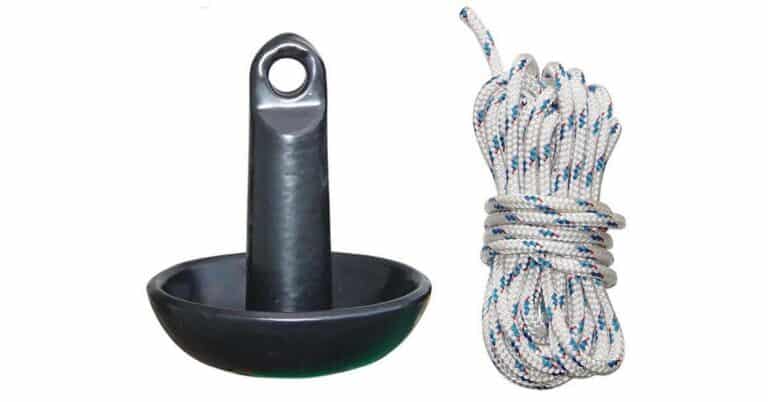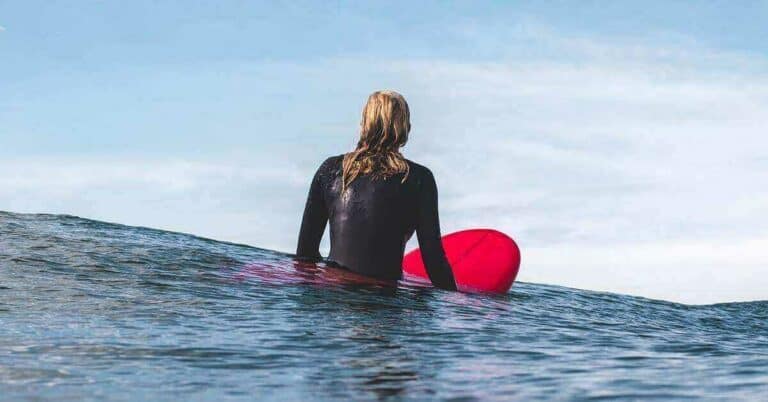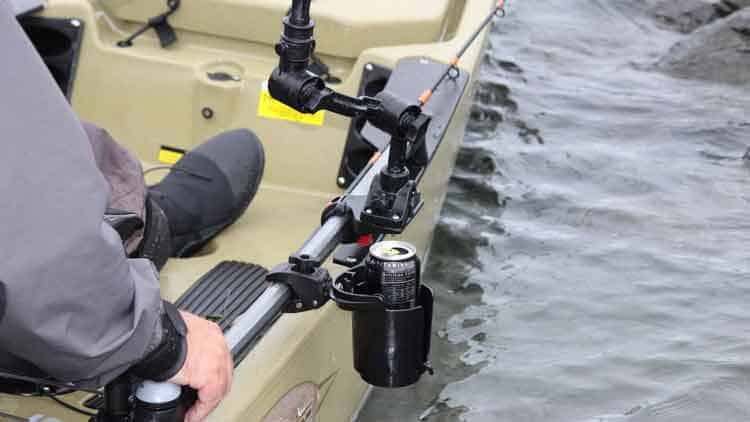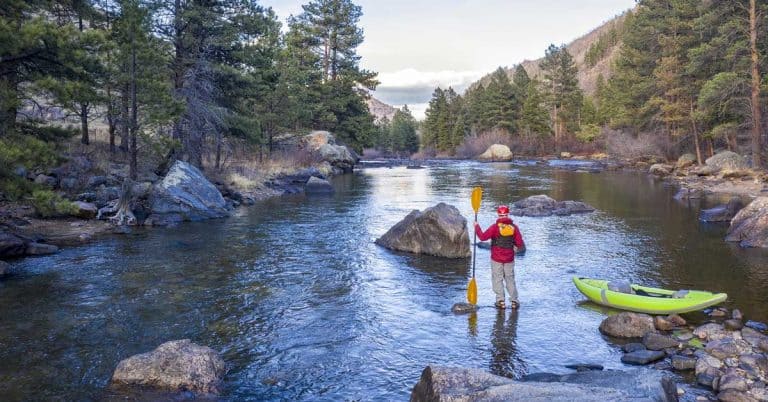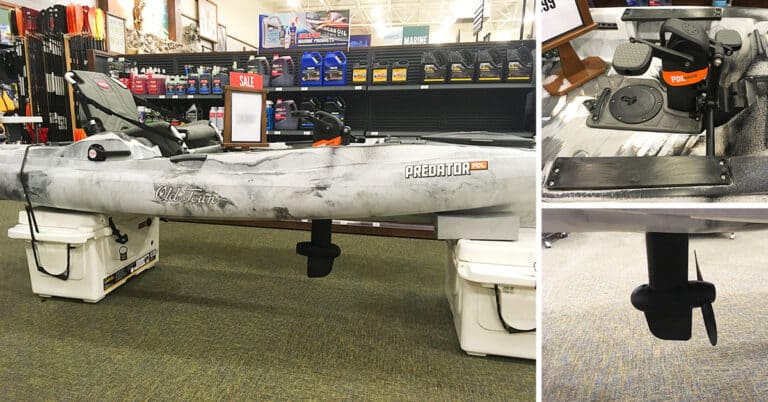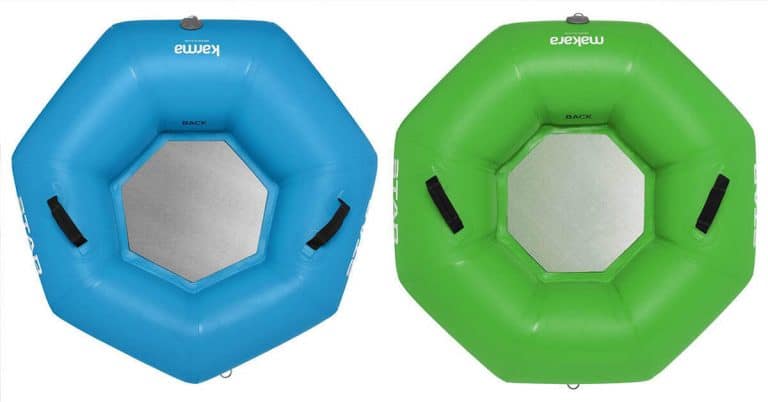Disclosure: I am compensated for purchases made through some links on this site. Click for details.
WOW!!! Fishing float tubes are extremely fun little boats that can get you into some hard-to-reach fishing holes! They’re ideal for exploring lakes, ponds, still water around rivers, and remote backwaters. And they provide such a relaxing way to fish!
There are a few tips to ensure your success when fishing from a float tube. Some of these tips should be hard and fast rules to review before going out on the water. It also pays to review your desired and required fishing float tube accessories but I’ll leave that for another post.
Let’s take a look at the top float tube fishing tips.
Choosing Fishing Rods for Float Tube Fishing
The low position of a fishing float tube inhibits your range of motion when casting thus affecting casting distance and accuracy. No matter what species of fish you’re after, a somewhat longer fishing rod will compensate for the restriction in movement, though the distance of your cast isn’t always as important in a float tube. You can often sneak in closer to your spot in a tube to eliminate the need for long casts.
A fishing rod around 9ft is often best. Rods longer than 9ft are more likely to get caught up in trees above and be too long and cumbersome to land a fish. The power and action of the rod will be influenced by the type of fishing you’re doing.
If you are able to get in close to where you want to cast, a rod shorter could work better for you. Shorter rods can make it easier to handle tangles, tie tackle, land fish, and avoid overhanging limbs.
If you’re looking for other float tube fishing accessories like rod mount holders, we have a list of required fishing accessories and others you never knew you could mount on a tube.
Choose the Right Fishing Tackle for Float Tube Fishing
You won’t have a lot of room for extra gear. It’s important to narrow down and organize your fishing tackle in the smallest possible tackle box that fits into a storage pocket on your float tube.
If you’re unsure of what the fish are biting on, consult local experts and fishing forums for your area or take a variety of lures.
Practice will improve your skill and knowledge of which rod, reel, and tackle to use for your particular type of fishing.
Choosing the Right Fishing Spot
It’s important to choose the right fishing spot ahead of time. Don’t wait till the last minute to choose your spot unless it’s a spot you tube float fish often.
Factors that must be considered when picking your fishing spot are:
Remoteness of Your Put-in
The remoteness of your fishing spot can make for some unique challenges so plan ahead. Many put-ins may be easy to get to but some of those special spots may require a bit of a hike.
Know the Water Conditions
Factors like water levels and currents can create difficulties for float tubes.
Low water levels may expose rocks, limbs, logs, stumps, or debris that can damage your tube or cause bodily injury. You don’t want to get your flippers or feet caught in obstacles either.
High water levels may cause faster currents and the increased depth and possible murky or muddiness may obscure rocks, limbs, logs, stumps, or debris that can damage your float tube or cause bodily injury too.
Coverage
Fishing float tubes aren’t made to cover a lot of water unless you’re floating down a slow-moving river or stream. You’re in a tube with fins on your feet. It’s like being a duck on the water for a day.
It’s not efficient or practical to go far in a float tube. This means you’ll want your put-in should be close to the water you want to fish.
If you need to paddle a distance to get to your fishing spot or if you want to cover more water in a day, you’ll want to look into a sit-on-top fishing kayak or a sit-in fishing kayak whether it’s a hardshell or inflatable kayak.
Shoreline
Stay as close to shore as possible when using a fishing float tube. Venturing out in open water introduces dangers. You can’t move quickly in a float tube which leaves you to the mercy of the wind, weather conditions, currents, other vessels, and accidents that can deflate your tube.
If you want to get out of your tube to fish along the shoreline, make sure you do not trespass on private property. Trespassing can anger landowners and get you in trouble with the law. The use of United States Geological Survey (USGS) maps will show you the national forest and parkway boundaries.
Watch the Time
Some fishing spots are easy to get to and others take more time when hiking to and from your put-in. Make sure you have enough time to paddle back to your take-out and return to your vehicle… Remember, some waters make return trips challenging.
Paddling Hazards to Avoid in a Fishing Float Tube
There are paddling hazards that must be avoided when using a fishing float tube:
- Fishing float tubes are not designed for fast-moving water.
- Dams, waterfalls, and strainers can all be very dangerous. The water turbulence can trap float tubes and drown fishermen. Research your fishing spot beforehand and portage when near these or other obstructions.
- Submerged objects that can damage the float tube or entangle fisherman.
- Float tubes are at the mercy of stronger winds and can easily be pushed off course. Getting back on course may be impossible and will be exhausting.
- The wake from other watercraft can easily toss around a float tube.
Safety and Health When Using a Fishing Float Tube
Before you head out to fish in your float tube, make sure all of your equipment is in proper working order and review the Fishing Float Tube Safety Guide:
- Float Tube Design Features that Affect Safety
- Weight Capacity of Fishing Float Tubes Impacts Safety
- Fishing Spots and Water Safety
- Weather Safety Issues
- Float Tube Skill Levels Impact Safety
- Safety in Numbers
- Fishing Float Tube Accessories for Safety
- Dangerous Fishing Float Tube Accessories
Above all, wear a PFD!
Protect Your Valuables
Put your wallet, keys, cell phone, and other stuff of importance in a waterproof case or dry bag. I use both products in combination: a Sea to Summit dry sack and a Pelican Ruck Case for my phone and keyfob.
I don’t use the Pelican phone case. It’s a very different product for a different purpose. Though I did have the i1015 Micro iPhone Case and loved it!
Don’t Overinflate Your Fishing Float Tube
Do not overinflate your fishing float tube. Overinflation can cause leaks and permanent damage to your tube, especially on hot days which can cause your float to expand even more.
Don’t Exceed the Weight Capacity of Your Float Tube
Fishing float tubes have weight limits. For your safety, be sure you own or purchase a tube that adequately accommodates your weight and the weight of your gear. I’m not that heavy but my weight and gear push or exceed the limit of many floats so be careful.
Need to know which tube will work best for you? We’ve broken down the weight capacity of popular float tubes into easily digestible tables.
Where to Buy Fishing Float Tubes
Is a fishing float tube right for you? Yes? So, where’s the best place to get one?
Like so many items these days, online shops are the best place to get a fishing float tube. Trusted online stores like the following provide a good number of high-quality, comparable products.
These are my favorite online outfitters for float tubes. Prices change and there may be a sale so be sure to check for your best deal. 😀

